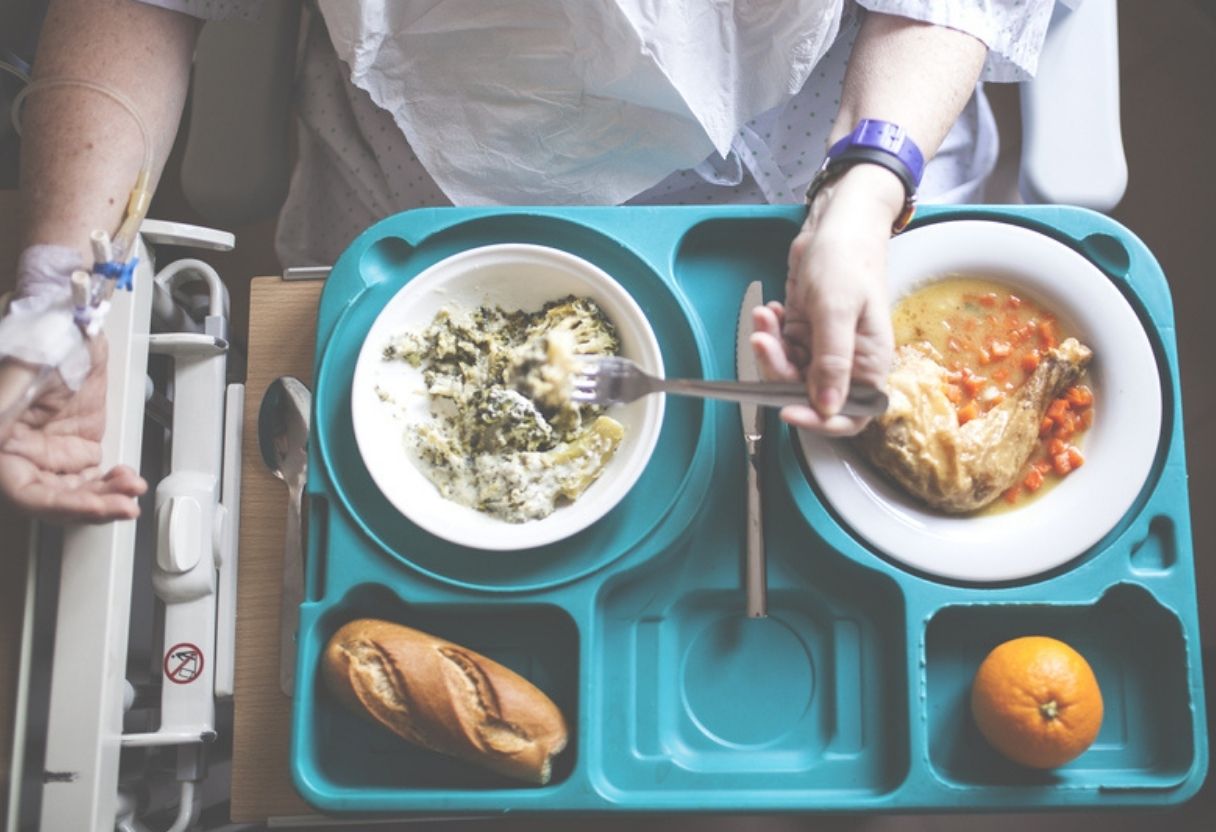4 Best Practices for Food Handling in Hospitals

Observing safe food handling protocols is difficult no matter what industry your foodservice business caters to. Nowhere is this more true than in hospitals. Given the diverse needs of patients in your facility, especially those with compromised immune systems, food safety mishaps carry more severe consequences in hospitals than almost anywhere else.
To prevent potentially life-threatening foodborne illness outbreaks, you may want to familiarize yourself with the extended food safety protocols specific to your business. To help better serve medical foodservice, we compiled this list of methods, protocols, and safeguards to protect the health of your patients. Read on to learn more.
Equipment cleaning
For many businesses in the foodservice industry, cleaning food production equipment and surfaces is routine. Usually, this process entails using hot soapy water and a sponge. However, due to the heightened importance of preventing contamination in the hospital setting, these protocols may not be enough.
One way to improve your cleaning regimen is to introduce chemicals into your cleaning process.
The ISID recommends utilizing a diluted bleach solution with a 1:10 ratio. This solution is proven to be more effective in eliminating microorganisms that commonly cause foodborne illness.
Your revised cleaning process should follow this order:
- Wash - Use hot soapy water and a sponge to remove visible signs of food or other materials.
- Rinse - Use a towel or clean sponge and room-temperature water to remove leftover soap.
- Sanitize - Using a towel, apply your diluted bleach solution.
- Air dry - Allow time for the solution to evaporate before using the surface again.
Customize your HACCP action plan with the right team
Creating and implementing a HACCP action plan for foodservice in assisted living facilities and hospitals are mandatory. These plans identify critical points in your operations that could promote the spread of foodborne illness. However, due to the unique needs of your patients, you should avoid taking a one-size-fits-all approach.
The FDA strongly suggests creating a multi-disciplinary HACCP team to help create your strategy including internal, local, and consultant resources. For hospitals, it may be relevant to build a team consisting of experts in operations, sanitation, quality assurance, and food microbiology.
The FDA also recommends these experts be knowledgeable in the food process if they are to help complete the hazard analysis and plan. This means when seeking outside help, make sure to employ the help of scientists and technical experts to help identify food safety risks specific to your operation and facility. No two hospital cafeterias are the same, and your consultants and action plan should reflect that.
Train your staff
Nurses, attendants, and medical assistants are the heart of your facility. Though they may be experts in caring for the ill, they aren’t necessarily experts in food safety. An NIH study concluded that 80% of patient-facing hospital personnel reported they had never participated in dedicated food-handling training.
While these staff routinely perform certain functions, such as wearing gloves to serve food, many respondents indicated a lack of knowledge relating to cross-contamination, temperature control, and food storage.
To help your staff and protect your patients, consider holding a meeting to fill in the blanks of their food safety education. In this meeting, discuss some of the fine details of safe handling they may not already know and review essential documentation. Provide literature such as FDA guides on safe food handling, as well as your HACCP action plan.
Automate temperature monitoring and documentation with GlacierGrid
Temperature monitoring is a mandatory protocol across foodservice, traditionally using thermometers and pen and paper logs. It plays an important role as fresh items, such as fruits, vegetables, meats, and dairy, are susceptible to spoilage and food safety issues in poor storage conditions.
However, manual temperature checks are unreliable because due to a variety of factors:
- Temperature excursions may occur between audits, creating a possibility of food spoilage without anyone knowing.
- Thermometers may not provide the correct data due to improper calibration.
- Temperature checks are time-consuming, and your staff may not perform them correctly if rushed.
Because the risk of critical outcomes is higher in hospital settings, making sure you have accurate temperature data is paramount. To make sure your temperature checks are accurate the first time, every time, we built GlacierGrid.
About GlacierGrid
Your patients depend on you to provide them with nutritious and safe meals. In tandem with HACCP planning, equipment cleaning, and staff education, GlacierGrid can be one of the essential tools you use to protect your patients and support them through your hospital stay.
But why GlacierGrid specifically?
- GlacierGrid wireless temperature sensors measure conditions in your cold storage areas every ten minutes, can be set up in 10 minutes or less, and don’t require WiFi.
- GlacierGrid helps create stronger food safety processes with temperature alerts that notify you when equipment is out of temperature with email, SMS, phone calls, or push notifications.
- GlacierGrid provides 24/7 reporting and recordkeeping to prove compliance as part of your HACCP action plan.
Click below to buy now and see how GlacierGrid can improve your hospital food safety strategy today.







